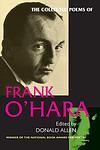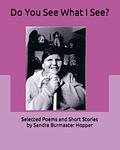Frank O'Hara
Frank O'Hara was an American writer, poet, and art critic. He was a prominent member of the New York School of poetry, a group of poets, artists, and musicians that emerged in the 1950s and 1960s in New York City. O'Hara's poetry is known for its vibrant, colloquial style and its association with the visual arts, particularly Abstract Expressionism. He was also involved with the Museum of Modern Art in New York City as a curator. O'Hara's work is celebrated for its urbanity, wit, and depiction of contemporary life. He died in a tragic accident in 1966 at the age of 40.
Books
This list of books are ONLY the books that have been ranked on the lists that are aggregated on this site. This is not a comprehensive list of all books by this author.
-
1. Lunch Poems
"Lunch Poems" is a collection of verse that captures the hustle and bustle of everyday life in New York City during the 1960s. The poems are spontaneous, conversational, and often humorous, reflecting the author's observations and thoughts during his lunch breaks. The collection is a celebration of the ordinary, the mundane, and the overlooked, offering a unique perspective on the human condition and urban life.
-
2. Collected Poems of Frank O'Hara
This book is a compilation of poems by a renowned mid-20th century American poet, known for his spontaneous, lively and intimate style. The collection includes a wide array of his works, reflecting the poet's life in New York City and his experiences in the art world. The poems are characterized by their conversational tone and their candid observations about everyday life, love, and loss. This collection showcases the poet's unique ability to blend the personal and the universal, the trivial and the profound, in his poetry.
-
3. Selected Poems
This collection brings together a vibrant array of poems that capture the essence of mid-20th-century American life, with a focus on the dynamic streets of New York City. The poet's work is known for its spontaneous, conversational style and its blend of high and low culture, drawing from personal experiences, art, music, and the everyday encounters that define urban existence. The poems are marked by their immediacy and accessibility, often addressing the reader directly and blurring the lines between poetry and the rhythm of ordinary speech. Through his verse, the poet creates a vivid, intimate portrait of his world, reflecting the joys, sorrows, and complexities of his time.


